How to Visit the Great Sand Dunes: A Local’s Guide [2024]
This website may contain affiliate links and we may be compensated (at no cost to you!).
The Great Sand Dunes National Park is like no other national park in the country, and certainly unlike any other landscape in Colorado.
It’s mounds and mounds of sand available for exploring, sandboarding, sand sledding, hiking, camping, and more.
And with nearly 150,000 acres to explore and 30 square miles of sand dunes, there are a variety of things to do at the Sand Dunes.
As a Colorado native who just visited this incredible National Park (again!), here is what my experience was like.
So, if you’re planning a trip to Great Sand Dunes National Park, I’m sharing a complete guide as a Colorado local, to help you make the most of it.
Getting to the Great Sand Dunes National Park
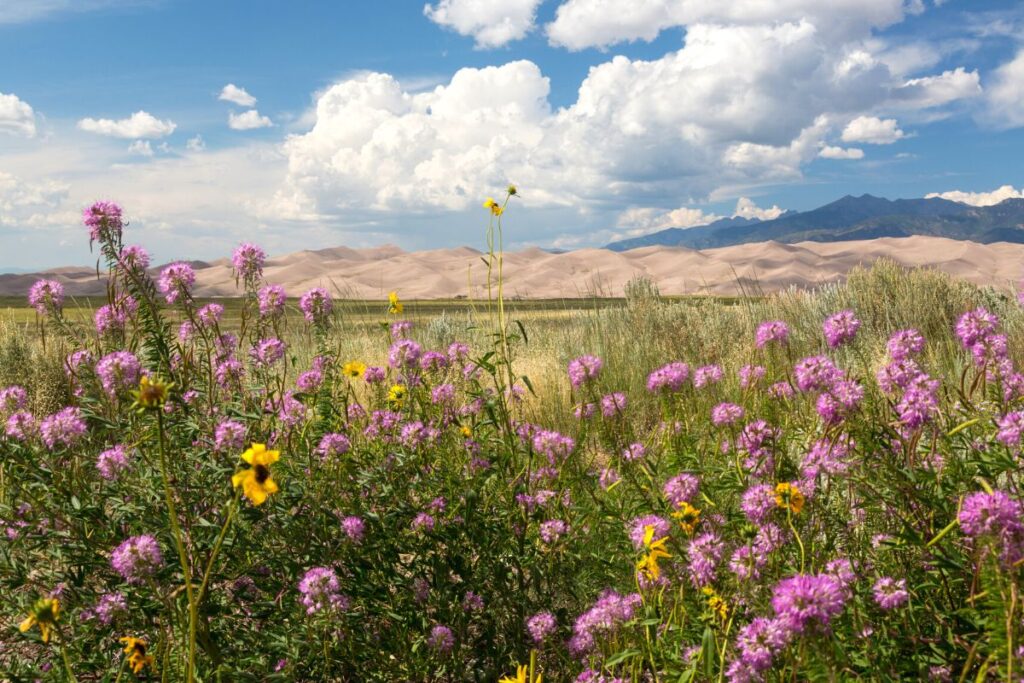
The Great Sand Dunes National Park & Preserve in Colorado is located in the expansive San Luis Valley, seemingly in the middle of nowhere.
Yes, it’s a very strange place to find some of the tallest sand dunes in the country, nestled near the Sangre de Cristo Mountains.
Some of the closest Colorado communities are Crestone, Hooper or Mosca with Alamosa being the largest town in the vicinity.
If you’re coming from Denver it’s approximately a 3-4 hour drive into southern Colorado, depending on which route you take.
From Colorado Springs you can go south on I-25 through Pueblo, or take the route through Canon City to Salida and then head south, which is the route we took.
Arriving near the Great Sand Dunes looks and feels like a sparsely populated desert. However, this is actually the Preserve that leads to the National Park.
The scenic drive to the Great Sand Dunes consists of a diverse landscape of grasslands, from the San Juan Mountains to the San Luis Valley.
Tips for Visiting the Great Sand Dunes
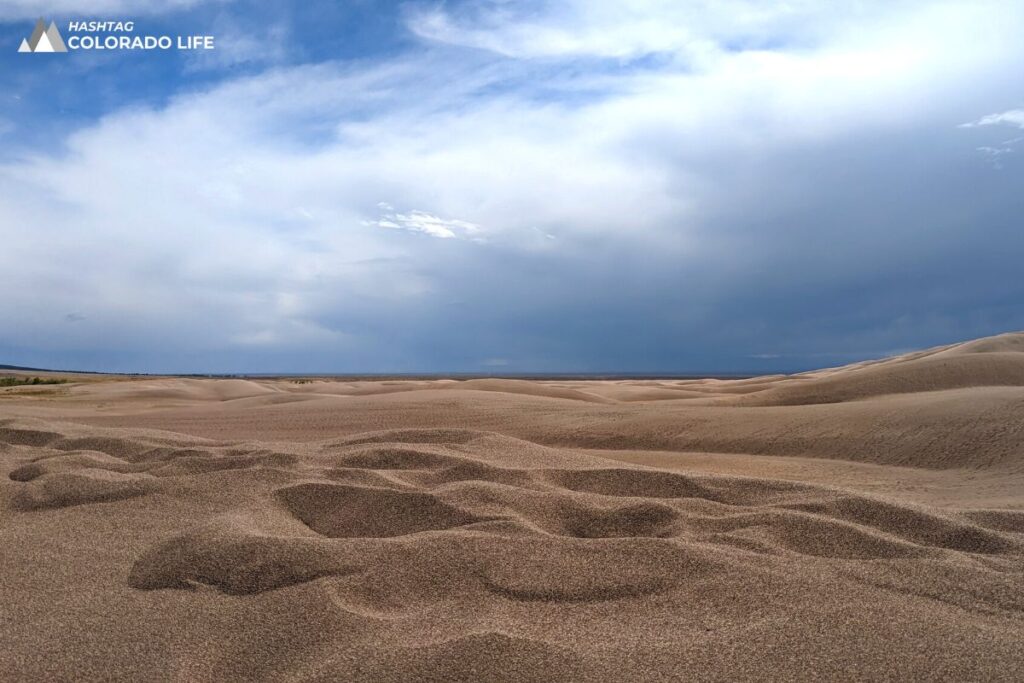
Located in the Colorado mountains, the Great Sand Dunes Park elevations range from around 7,500 feet to over 13,000 feet.
If you’re visiting from sea level, you may want to take an extra day or two to get used to the altitude.
As a local couple who recently visited the Great Sand Dunes National Park, here are our best tips for your next trip.
Park Hours and Cost
The Great Sand Dunes is open all year round, 24/7 and offers a diverse landscape depending on the time of year.
All visitors must have an entrance pass in order to access the park and all of the amenities. Simply visit the NPS.gov website to purchase a standard entrance pass, which is available for motorcycles or private vehicles.
Larger groups in vans or buses can get in for a bundled, slightly lower price, depending on the amount of people visiting.
Or you can save a bit of money by purchasing an annual park entrance pass. This includes unlimited visits to all passholders and family members in the vehicle for one year.
There are also a few days a year that you can get in for free so consider visiting the Great Sand Dunes on one of these fee-free days. There is no entrance pass required on these days:
- In January — Martin Luther King, Jr. Day
- April — First Day of National Park Week
- August — The Great American Outdoors Act
- September — National Public Lands Day
- November — Veterans Day
The Best Time to Visit
When it comes to the best days and times of year to visit the Great Sand Dunes, peak season starts in late May and continues through mid-June.
These early summer months are when the weather is still mild and the sand is not as hot as it is later into the height of summer.
This is also when the Medano Creek is usually at its highest, making it a great excursion for families with kids.
However, peak season is also usually the busiest and when the campgrounds, the Visitor Center, and parking lots are full to bursting.
We recommend visiting the Great Sand Dunes during the week if possible. During our recent trip, we visited on a Wednesday and Thursday and saw very few people, with plenty of parking available.
The months of May and September are known for having some of the best weather and fewer crowds at the Great Sand Dunes.
What to Wear to the Great Sand Dunes

Be prepared for all types of weather at the Sand Dunes as you are completely exposed to the elements here. There are no trees or bushes to help buffer the wind or sun from beating down on you.
I recommend wearing multiple layers so you can put on or take off items as needed. Sometimes the wind can make for a chilly day, while super sunny days can become unbearably hot.
Bring comfortable walking shoes or hiking boots, but be prepared to go barefoot if the sand isn’t too hot.
Don’t forget about footwear to protect your furry friend from the blistering hot sand that can get up to 150 degrees.
And be prepared to get sand EVERYWHERE as it is a national park full of sand after all.
What to Bring on Your Trip
There are no snack stations or water fountains at the Great Sand Dunes, so bring your own food and plenty of water.
However, the Visitor Center does offer vending machines with snacks and drinks, but there’s nothing at the entrance near the dune parking lot.
We also recommend bringing sunscreen, a sun hat or cap, as well as sunglasses to protect your skin and eyes from too much sun.
Things to do at the Great Sand Dunes

There are plenty of things to do at the Great Sand Dunes whether you’re visiting for a few hours, the entire day, or several days.
Visitor Center
The Visitor Center is a great first stop as you head into the park for the day. It has public bathrooms, a gift shop, small museum, snacks, drinks, and an observation point where you can take photos of the Dunes.
You can also speak to any of the Rangers to ask about weather details, wildlife in the area, camping spots, and more.
If you lose something in the park, check out the lost and found which is available here. The Visitor Center is open year-round except for winter federal holidays.
And don’t forget to grab a Visitor Guide and map on your way out to explore the Park. Or download a guide for free via their website.
Medano Creek
As mentioned, during a very short period of the year from late May to mid-June, the Medano Creek is available for splashing and playing.
This wide and shallow creek bed offers a refreshing and cool way to relax near the Dunes. In order to access the Sand Dunes from the parking lot you’ll have to traverse over the Medano Creek.
However, the water is very shallow and perfect for wading barefoot, skimboarding, or even tubing during the “surge flow”.
Due to the shallowness of the creek, it’s a perfect place for kids to build sand castles and splash in the water while adults look on from the banks.
Sand Boarding & Sand Sledding
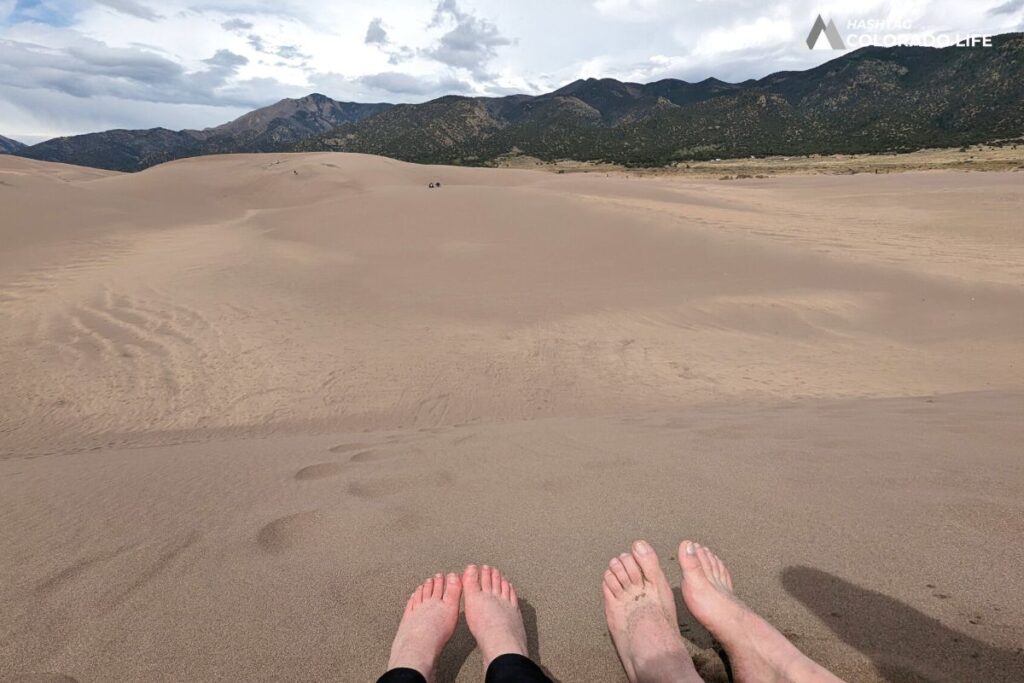
Just past Medano Creek is a nice selection of smaller dunes that are perfect for sand boarding and sand sledding.
Inside the Airbnb we booked, sand boards and sand sleds were available for rent for the day. But there are also other shops in the nearby towns where you can rent boards and sleds.
The closest location for renting boards is the Great Sand Dunes Oasis which is only about four miles outside the park.
Or check out Kristi Mountain Sports in the town of Alamosa for sand sled rentals or sand boards. Either way, we recommend getting to the rental spot earlier in the day to have your pick of the rentals.
Sand boarding is a lot like surfing or snowboarding, so you’ll likely fall and get a few bruises and sore muscles along the way. And be ready to get some sand in places that you didn’t think possible!
Sand sledding is a bit easier but nothing at all like sledding in the snow. You should still expect to crash and slide off your board occasionally all in the pursuit of fun
Hike the Dunes
From simply walking across the Dunes to hiking to the top of the tallest dune in the country, there is no shortage of hikes in the area.
The top of High Dune and Star Dune offer two of the best dune hikes and can take anywhere from 2.5 hours to 5 hours to reach the summit of the dunes.
The Sand Sheet Loop Trail is a wheelchair accessible trail that travels along the grasslands of the Preserve.
Or check out the nearby Montville Nature Trail or the Mosca Pass Trail, both of which feature plenty of wildlife, small creeks, and wildflowers in the summer.
Tent Camping or Backcountry Camping
Another popular activity to do at the Great Sand Dunes is camping. Opt for tent or RV camping at the Piñon Flats Campground or camp directly on the dunes.
Backcountry camping permits are available year-round but only by reservation on recreation.gov. And they are first-come, first-serve with a maximum of 20 groups per night and 6 people per group.
Choose from designated sites along the Sand Ramp Trail or enjoy primitive camping anywhere within the Sand Dunes themselves.
Backpacking and camping on the dunes offers the incredible chance to sleep under the moon and stars. It’s a secluded campsite that’s quiet and with nothing but the clouds above for miles and miles.
And the sand dunes might be one of the best places in the state for top tier stargazing.
With nearly no light pollution, very low humidity levels, many cloudless nights and the higher elevation, it is easy to see thousands of stars dazzling the night sky.
Where to stay near the Great Sand Dunes
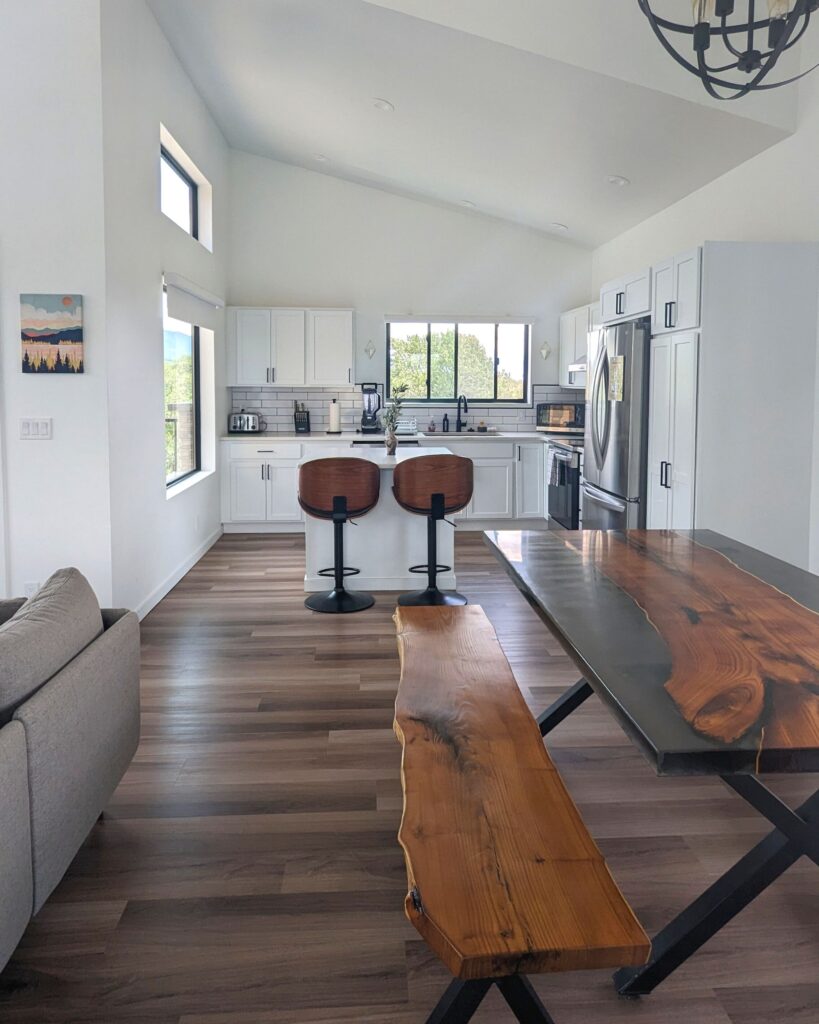
There are multiple cities near the Great Sand Dunes that offer lodging, with the main ones being Crestone and Alamosa. You can also stay in cities like Salida and simply drive south for about an hour and a half.
For our trip, we chose to stay in Crestone at a lux Airbnb, complete with a main house and private Geodome under the stars.
This, and other Airbnb retreats, are in secluded locations at the base of the Sangre de Cristo Mountains.
The house and Geodome comfortably sleeps 8 guests with 4 bedrooms and 5 beds. It features a full kitchen, with upgraded appliances, and two bathrooms.
This lux location offers gorgeous views, a 7-person hot tub and private outdoor balcony.
If you’re planning a visit to the Great Sand Dunes we highly recommend staying at this Luxury Geodome Retreat near Crestone. But they’re booking up quickly, so don’t wait!
Some other options for lodging near the Great Sand Dunes include:
- Pinon Flats Campground (open from April – October only)
- the Great Sand Dunes Lodge
- Great Sand Dunes Oasis motel and campground
- Zapata Ranch and Lodge
- Holiday Inn Express in Alamosa
- the Fairfield Inn & Suites in Alamosa
And of course, you can seek out more remote sites by camping on the dunes, but you’ll have to backpack on foot.
How much time do you need to visit the Great Sand Dunes?
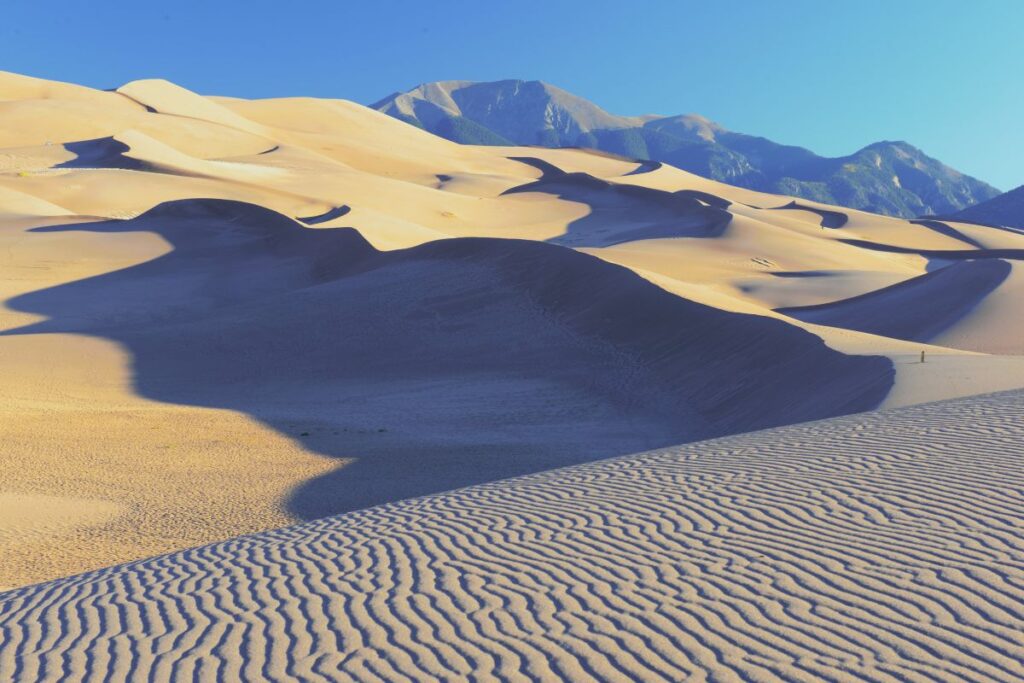
You don’t need a lot of time to visit the Great Sand Dunes. In fact, 2-3 hours is plenty of time to explore the initial area. However, we recommend spending at least an entire afternoon here.
In addition to splashing in Medano Creek, hiking up the Dunes, sand boarding or sledding, there is also camping, hunting, fishing, and stargazing available.
Check out a free daytime or evening ranger program, hike to Hidden Dune, one of the tallest dunes in North America, or explore a high-elevation lake.
The more time you have to spend at the Sand Dunes, the better. You can even watch the sunset, or moonrise, from the tops of many of the dunes.
Or drive your 4-wheel high-clearance vehicle on the Medano Pass Primitive Road for some epic off-roading with a quick hike to Zapata Falls.
We recommend using the National Park Service website to fully plan your visit, get the latest updates, and see weather predictions.
In 2004, the Park & Preserve was redesignated as a national park, making it one of the more recent national parks added in the United States.
Our trip to the Great Sand Dunes National Park was like no other. It was a fun two-day trip from Colorado Springs that we hope to do again soon.
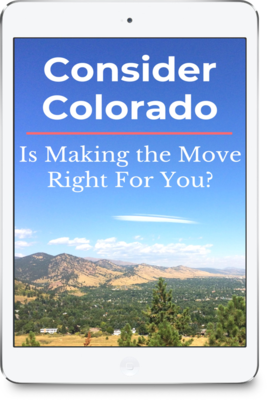
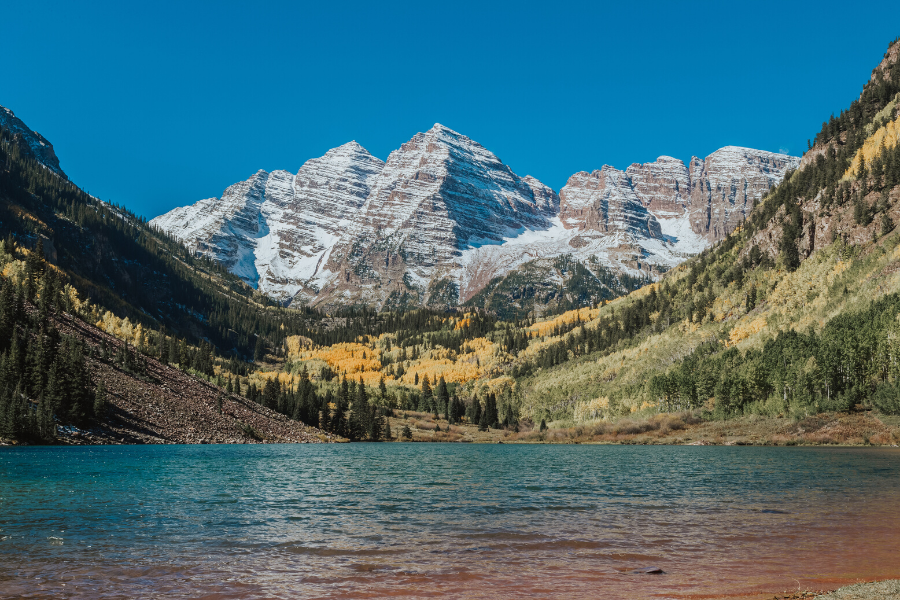


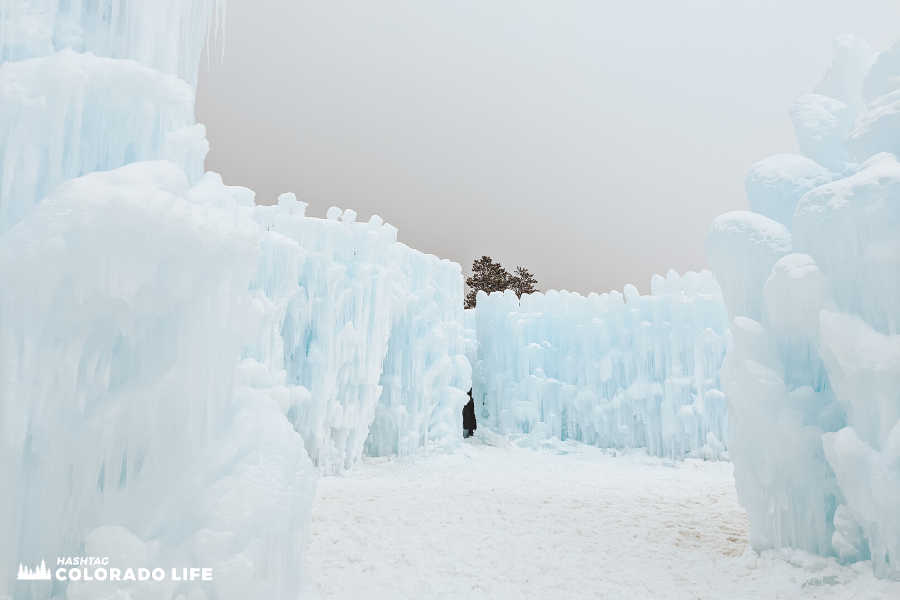

![22 Best Things to Do in Estes Park in 2023 [by a local]](https://hashtagcoloradolife.com/wp-content/uploads/2021/10/things-to-do-in-estes-park-colorado.jpg)